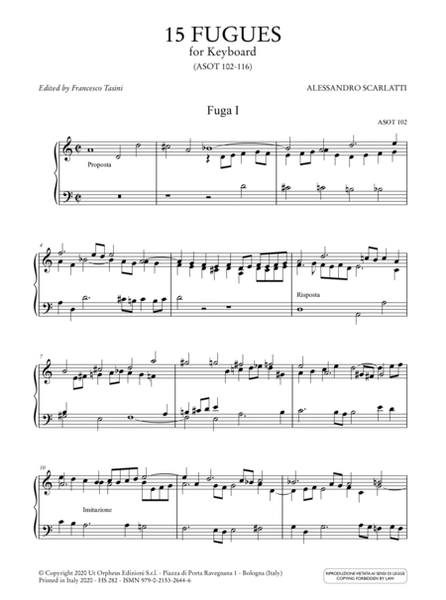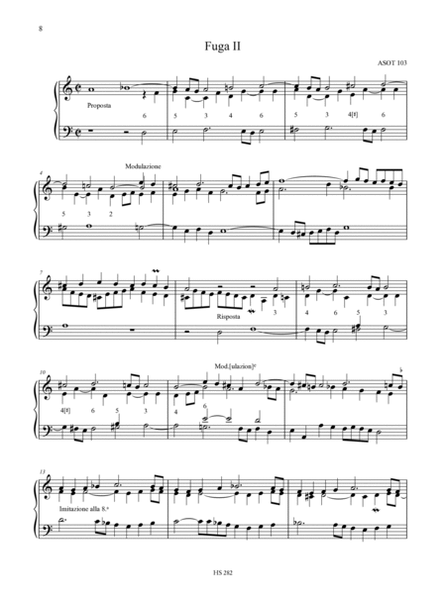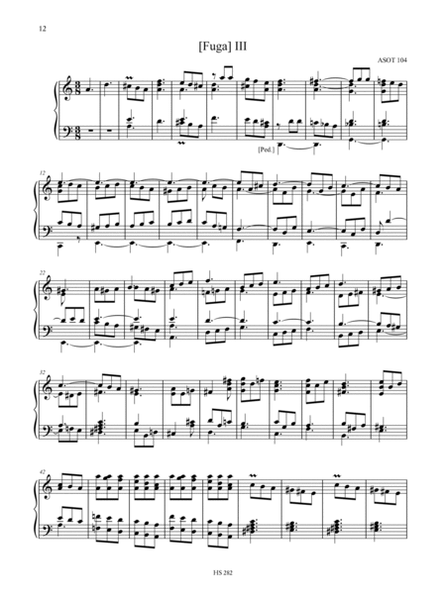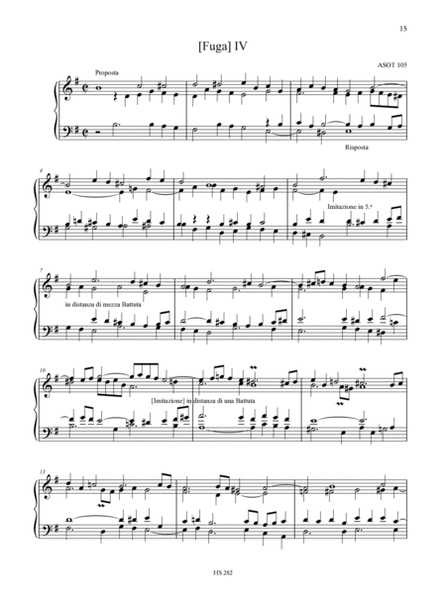15 Fugues (ASOT 102-116) for Keyboard. Three- and Four-Part Elaboration from the original Two-Part version
-
Ships in 3 to 4 weeks
Details
Description
SKU: UT.HS-282
Composed by Alessandro Scarlatti. Edited by Francesco Tasini. Saddle stitching. Classical. Score. Ut Orpheus #HS 282. Published by Ut Orpheus (UT.HS-282).ISBN 9790215326446. 9 x 12 inches.
The two-part composition has always been an essential stage in didactic treatises for teaching counterpoint; the Duo has been of fundamental importance, since the early decades of the sixteenth century, in the teaching of singing and in instrumental practice.
The interpretation and performance of Scarlatti’s Fughe a Due require on the one hand a correct and prompt interpretation of the chords which are the basis of the movement and the relationship between the two parts, and on the other an indispensable invention of a third or even a fourth part (to ensure, above all, "full and significant" harmony).
An indication of this practice of filling in is offered by the same ms. source containing Scarlatti’s Fughe a Due. In Fugue II in D minor, in the first eleven bars, we find indicated above the Bass a series of numbers showing the interval in relation to the respective upper line. These indications should not be confused with the "numerical marking" typical of the basso continuo and of the partimento, for they establish a clear sign of the usual practice exercised in the teaching of counterpoint in order to guide the student visually to pass safely and speedily from two to three or more parts; this type of numbering is often found in the counterpoint methods of the time, in particular in the section illustrating the "Contrapunto semplice e Diminuito".
These fifteen Fughe a Due, unlike the many Duos and Duets which figure in the counterpoint methods, are not a simple display of formulas, but they assert themselves as a calculated sample of characterized styles and genres, a series of pieces conceived with an exquisite sense of form.





 Share
Share